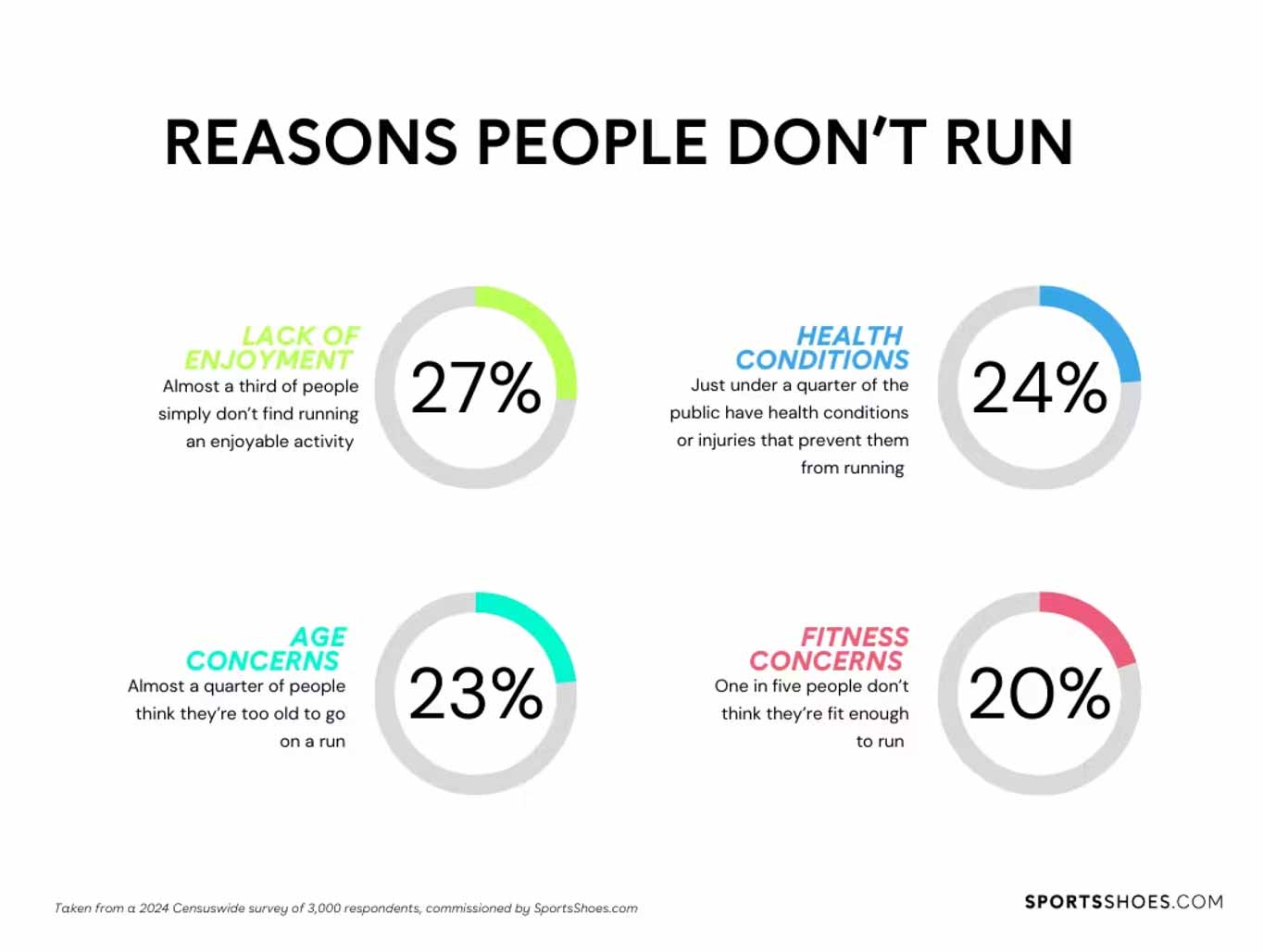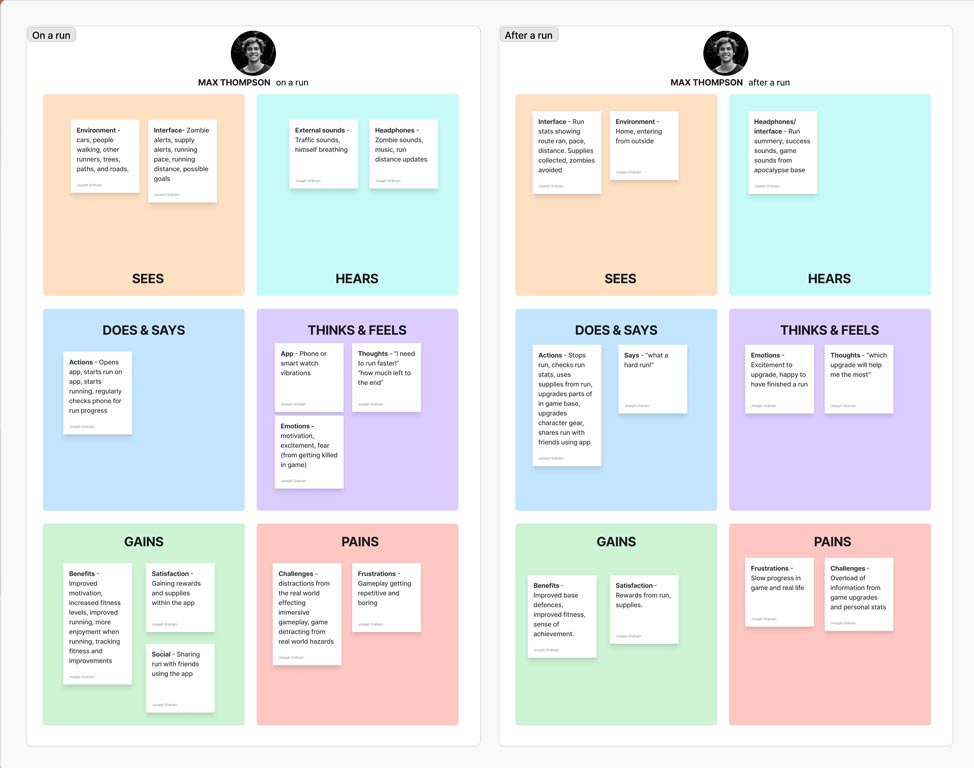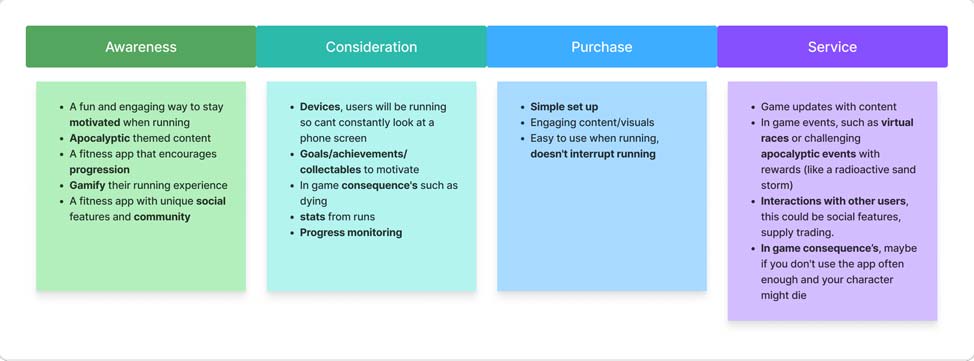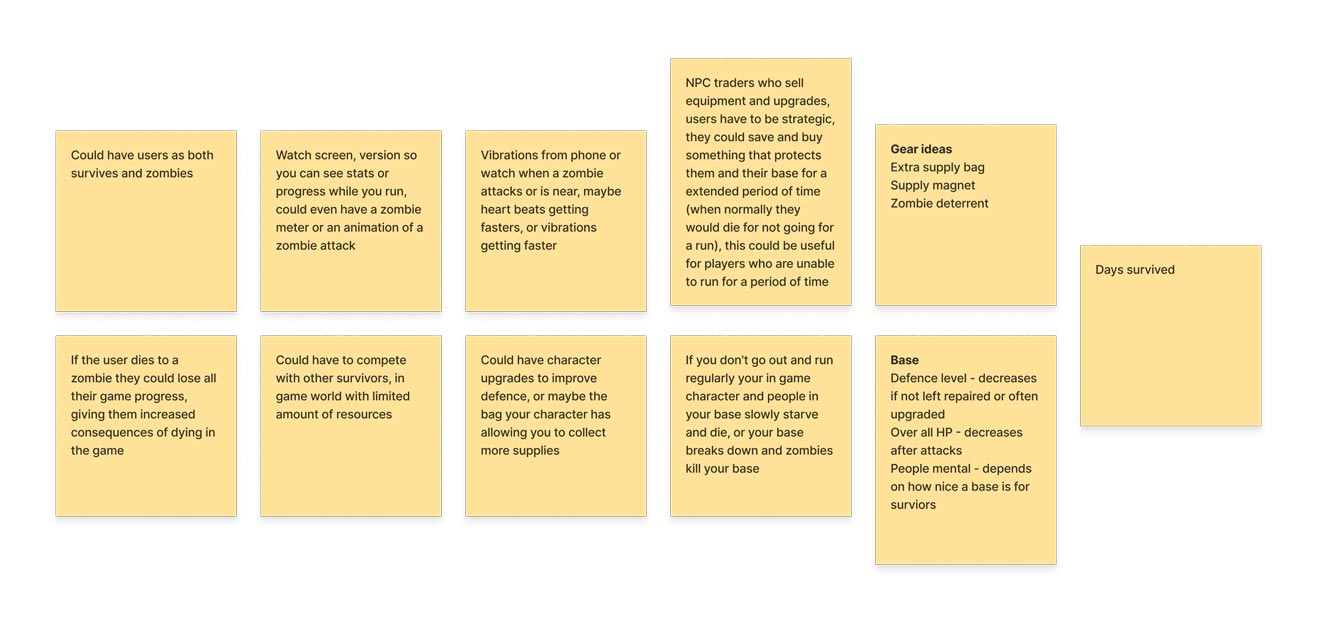Before jumping into designing the running app, it was crucial to understand the behaviours, motivations, and challenges of potential users. Research played a critical role in defining the target audience, identifying why people run, and uncovering the barriers that stop them.
Who is the audience?
To define the target audience, three key data points were analysed:
- Age demographics of frequent runners – Identifying the most active running age groups.
- Age groups using fitness apps – Understanding technology adoption among runners.
- Age groups engaged in video gaming – Exploring the crossover between gaming and fitness motivation
By combining these insights, the target audience for the app emerged: individuals aged 16 to 40, who actively run, engage with digital fitness tools, and are interested in gaming. These findings show there is an audience for the app and directly shaped the app’s design, ensuring it caters to users who are motivated by both personal fitness goals and interactive, game-driven experiences.
(Data sources: Statista and Our Sporting Life)
Why do people run?
Running serves as both a physical and mental outlet, with research showing most runners seeking either weight loss or stress relief. Research also shows our target audience of 16 - 40 mainly run for weight loss and better mental health. Understanding these motivations was key during the design of the app.
(Data sources: Sports Shoes)
What stops people running?
It's important to understand why people stop running, as this project's goal is to increase motivation to run. A survey by SportsShoes found that many people struggle with consistency due to a lack of enjoyment. This insight directly informed the project’s approach, leveraging gamification to make running feel rewarding rather than routine. By transforming the experience into a high-stakes survival challenge, the app taps into natural engagement drivers, encouraging users to maintain their pace and stay active.
Since the project's goal is to increase motivation, understanding what discourages people from running was equally important. A survey by SportsShoes revealed that many struggle with consistency due to a lack of enjoyment, a key insight that directly informed the app’s design.
To combat this barrier, the project leveraged gamification to transform running into a high-stakes survival challenge, ensuring users feel engaged, motivated, and driven to keep running.
(Data sources: Sports Shoes)

Competitor Analysis
To explore how existing apps enhance motivation and engagement in running, a competitor analysis was conducted. This helped identify pain points, strengths, and opportunities to differentiate the app, creating a unique experience.
Two standout apps, Strava and ZRX (formerly Zombies, Run!) provided valuable insights into how runners stay engaged. Strava excels in competitive and community-driven motivation, while ZRX leverages immersive storytelling to transform running into an engaging interactive experience.
Strava
Strava stands out in the fitness tracking space due to its strong social and competitive elements. It tracks personal records (PRs) to motivate users, uses segments for route based challenges, and integrates social features creating a strong community driven experience.
ZRX
ZRX (formerly Zombies, Run!) blends immersive storytelling with fitness. It offers multiple themes, including Zombies Run, Marvel Move, and Venture, catering to different interests. ZRX uses virtual races to give user community challenges, and story based zombie chases to create adrenaline-fueled workouts.





